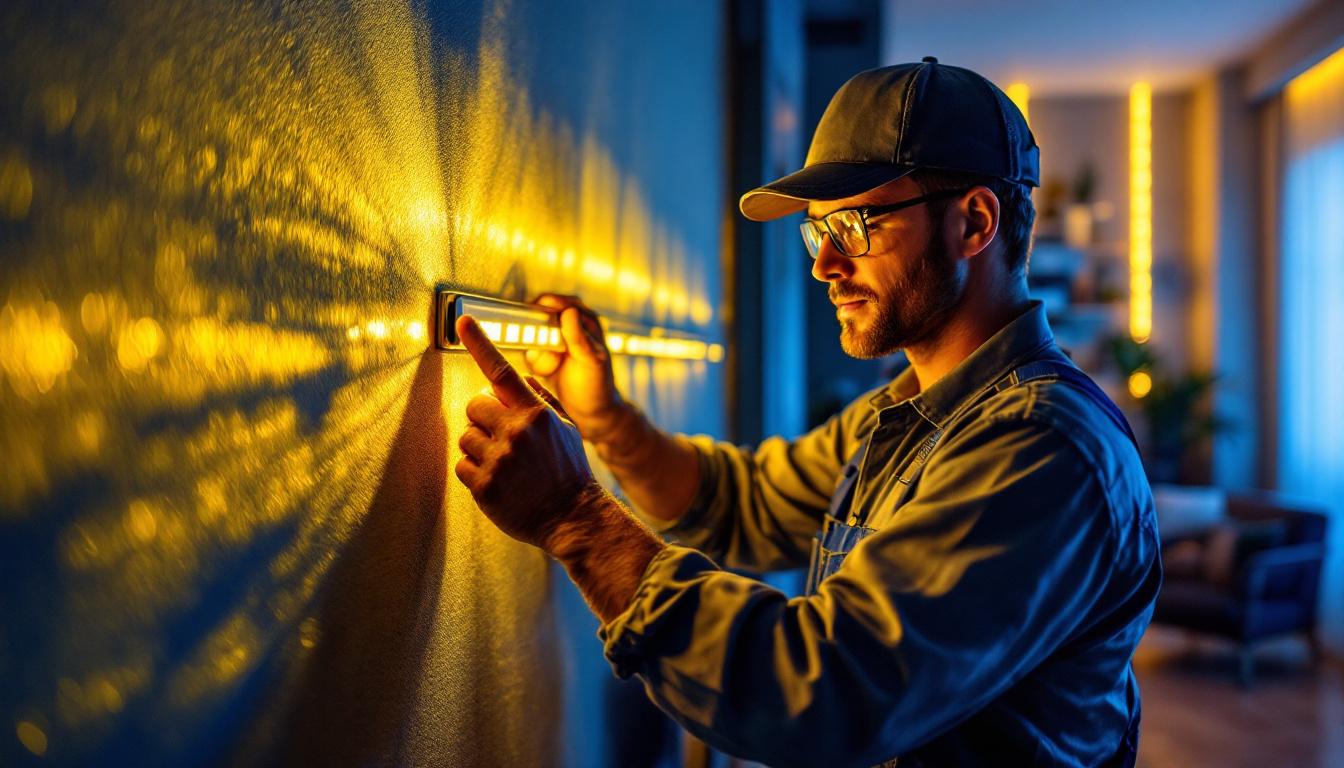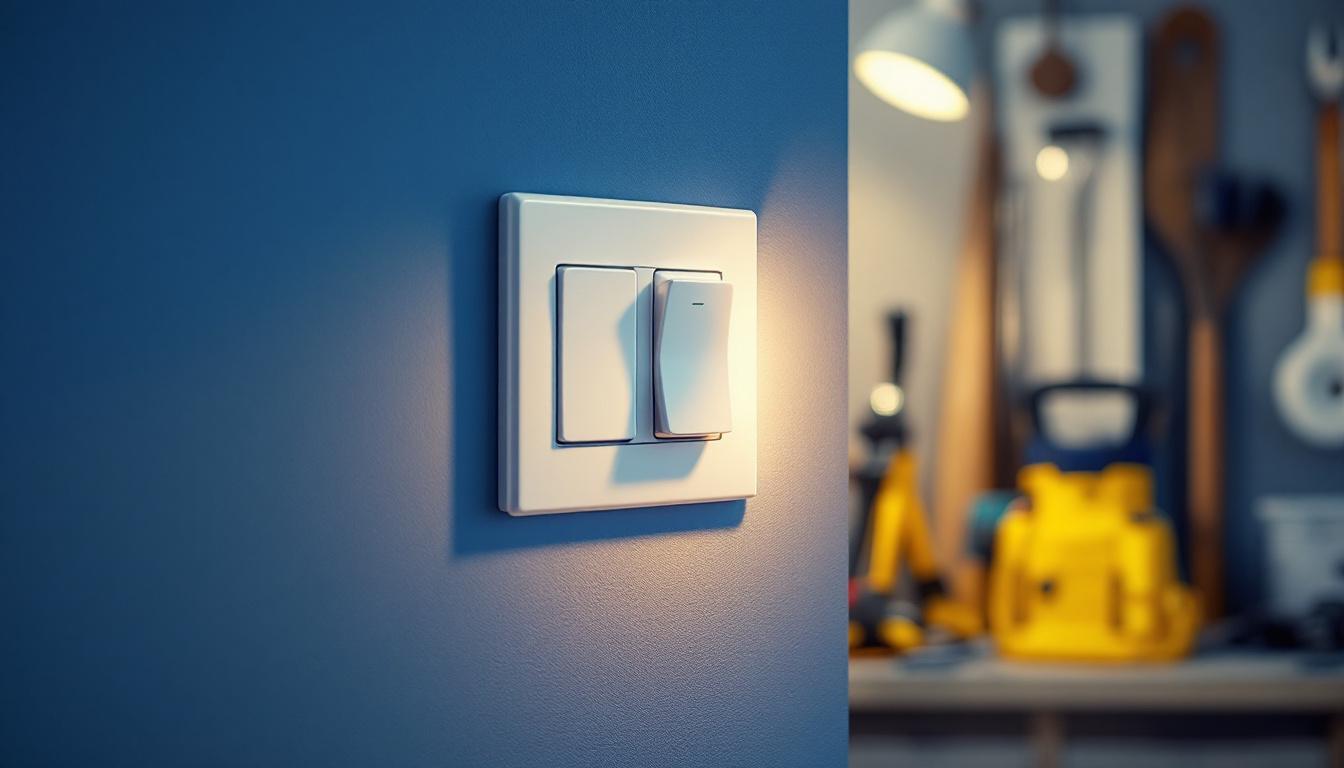
Lighting plays a pivotal role in enhancing the aesthetics and functionality of spaces, particularly in areas like staircases. For lighting contractors, understanding the nuances of stair lighting is essential to delivering projects that not only meet client expectations but also adhere to safety standards. This article delves into the significance of stair lighting, its impact on contractor projects, and best practices for effective implementation.
Stair lighting serves multiple purposes, from ensuring safety to enhancing the overall ambiance of a space. Properly illuminated staircases can prevent accidents and create a welcoming environment. For contractors, recognizing the importance of stair lighting can lead to more successful project outcomes.
One of the primary functions of stair lighting is to enhance safety. Poorly lit staircases can lead to slips, trips, and falls, which can result in serious injuries. By installing adequate lighting, contractors can significantly reduce these risks. It is crucial to consider the placement and intensity of lights to ensure that every step is visible.
Moreover, compliance with safety regulations is essential. Many building codes require specific lighting levels in stairwells to ensure safety. Lighting contractors must stay informed about these regulations to avoid potential liabilities and ensure client satisfaction. In addition to standard lighting, incorporating motion sensors can further enhance safety by automatically illuminating the stairs as someone approaches, ensuring that the lights are always on when needed, without wasting energy when the area is unoccupied.
Beyond safety, stair lighting contributes to the aesthetic appeal of a space. Thoughtfully designed lighting can highlight architectural features, create focal points, and enhance the overall design theme. For contractors, this presents an opportunity to showcase their creativity and expertise.
Different lighting techniques, such as uplighting, downlighting, or accent lighting, can be employed to achieve various effects. By understanding the desired ambiance, contractors can recommend the best lighting solutions to their clients, ultimately leading to more successful projects. For instance, using LED strip lights along the edges of steps not only adds a modern touch but also provides a soft glow that guides users safely. Additionally, the color temperature of the lighting can influence the mood; warmer tones can create a cozy atmosphere, while cooler tones may impart a more contemporary feel. This versatility allows for personalized designs that cater to individual tastes and needs.
There are several types of stair lighting that contractors can consider when planning a project. Each type has its unique advantages and can be tailored to fit the specific needs of a space.
Recessed lighting is a popular choice for staircases due to its sleek and unobtrusive design. Installed directly into the ceiling or walls, recessed lights provide a clean look while effectively illuminating the stairs. This type of lighting can be strategically placed to ensure even coverage without creating harsh shadows.
Additionally, recessed lights can be equipped with dimmers, allowing for adjustable brightness levels. This flexibility can enhance the user experience, making it suitable for various occasions, from everyday use to special events.
Wall sconces are another excellent option for stair lighting. These fixtures can be mounted on the walls adjacent to the staircase, providing both functional and decorative lighting. Sconces come in various styles, allowing contractors to select options that align with the overall design of the space.
Moreover, wall sconces can create a warm and inviting atmosphere. When placed strategically, they can guide users safely up and down the stairs while adding a touch of elegance to the environment.
Step lights, also known as tread lights, are specifically designed to illuminate each step. These fixtures are typically installed directly into the risers of the stairs, providing direct light where it is needed most. This type of lighting is particularly effective in preventing accidents, as it highlights each step clearly.
Step lights can also be used to create a dramatic effect, especially in modern or minimalist designs. By choosing LED options, contractors can ensure energy efficiency while providing ample illumination.
While stair lighting offers numerous benefits, there are challenges that lighting contractors must navigate during the design and installation process. Understanding these challenges can lead to more effective solutions and better project outcomes.
Staircases often come with space limitations that can complicate lighting design. In narrow stairwells or compact spaces, finding the right fixtures that provide adequate illumination without overwhelming the area can be challenging. Contractors must balance functionality with aesthetics to create a cohesive design.
In such cases, utilizing recessed lighting or compact wall sconces can be effective solutions. These options can provide necessary illumination without taking up valuable space, ensuring that the staircase remains safe and visually appealing.
Determining the optimal placement of lighting fixtures is crucial for effective stair illumination. Poorly positioned lights can create shadows or hotspots, leading to an uneven distribution of light. Contractors must carefully plan the layout to ensure that every step is adequately lit.
Using a combination of different lighting types can help achieve a balanced effect. For instance, pairing recessed lights with wall sconces can provide both direct and ambient lighting, enhancing visibility and safety.
As sustainability becomes increasingly important, contractors must consider energy efficiency when designing stair lighting. Choosing energy-efficient fixtures, such as LED lights, can significantly reduce energy consumption while providing adequate illumination.
Additionally, incorporating smart lighting solutions, such as motion sensors or timers, can further enhance energy efficiency. These technologies can automatically adjust lighting based on occupancy, ensuring that lights are only on when needed.
To achieve optimal results in stair lighting projects, contractors should adhere to best practices that enhance both safety and aesthetics. Implementing these strategies can lead to successful project outcomes and satisfied clients.
Before beginning any stair lighting project, conducting a thorough lighting assessment is essential. This involves evaluating the existing lighting conditions, identifying potential hazards, and understanding the client’s preferences. By gathering this information, contractors can develop a tailored lighting plan that meets the specific needs of the space.
During the assessment, it is also important to consider the surrounding environment. Natural light sources, wall colors, and furniture placement can all impact the effectiveness of stair lighting. Taking these factors into account can lead to a more cohesive and functional design.
Selecting the appropriate lighting fixtures is crucial for achieving the desired effect. Contractors should consider the style, size, and functionality of the fixtures to ensure they align with the overall design of the staircase. Additionally, energy efficiency should be a priority, as it can lead to long-term cost savings for the client.
It is also advisable to explore various brands and manufacturers to find high-quality fixtures that offer durability and performance. Investing in reliable products can enhance the longevity of the lighting installation and reduce the need for future maintenance.
Once the lighting fixtures are installed, testing the lighting levels is an important step. Contractors should evaluate the illumination at different times of day and under various conditions to ensure optimal performance. This may involve adjusting the placement of fixtures or changing the wattage of bulbs to achieve the desired brightness.
Feedback from clients during this phase can also be invaluable. Their insights can help fine-tune the lighting design to better meet their expectations and enhance their overall experience.
The world of lighting is constantly evolving, and staying informed about future trends can give contractors a competitive edge. Emerging technologies and design philosophies are shaping the way stair lighting is approached.
Smart lighting is becoming increasingly popular in residential and commercial spaces. Integrating smart technology into stair lighting can enhance convenience and energy efficiency. Features such as remote control, voice activation, and automated schedules allow users to customize their lighting experience.
For contractors, offering smart lighting solutions can set them apart from competitors. Educating clients about the benefits of these technologies can lead to more informed purchasing decisions and ultimately result in higher satisfaction rates.
LED technology continues to advance, offering even more options for contractors. Newer LED fixtures are becoming more versatile, with options for color temperature adjustments and tunable white lighting. These innovations can provide greater flexibility in design and enhance the overall user experience.
Additionally, as LED technology becomes more efficient, it can lead to significant energy savings for clients. Contractors should stay updated on the latest developments in LED technology to provide the best solutions for their projects.
Stair lighting is an integral aspect of lighting design that significantly impacts the safety, aesthetics, and functionality of spaces. For lighting contractors, understanding the importance of stair lighting and its various types can lead to more successful projects and satisfied clients. By navigating challenges, adhering to best practices, and staying informed about future trends, contractors can elevate their projects and enhance their professional reputation.
Ultimately, the right stair lighting can transform a simple staircase into a stunning focal point, ensuring that it is both safe and visually appealing. As the demand for innovative lighting solutions continues to grow, contractors who prioritize stair lighting will be well-positioned to meet the evolving needs of their clients.
Ready to elevate your stair lighting projects with the highest quality fixtures at unbeatable prices? Look no further than LumenWholesale. Our spec-grade lighting selection is designed to meet the rigorous demands of modern contractors, ensuring every staircase is not only safe but also exudes the aesthetic charm you envision. Say goodbye to inflated markups and hello to superior lighting solutions with our hassle-free bulk buying options and free shipping. Take the next step towards blending quality, affordability, and convenience into your lighting projects. Discover the best value in wholesale lighting by visiting LumenWholesale today.

Discover the best places to purchase LED light strips and explore how lighting contractors can leverage these versatile lighting solutions to enhance their projects.

Discover expert tips and insights on selecting and installing ceiling sensor lights for optimal efficiency and aesthetics.

Discover how ceiling fans with light kits can transform your space by adding both functionality and style.

Discover essential tips for lighting contractors to seamlessly integrate portable light switches into their projects.